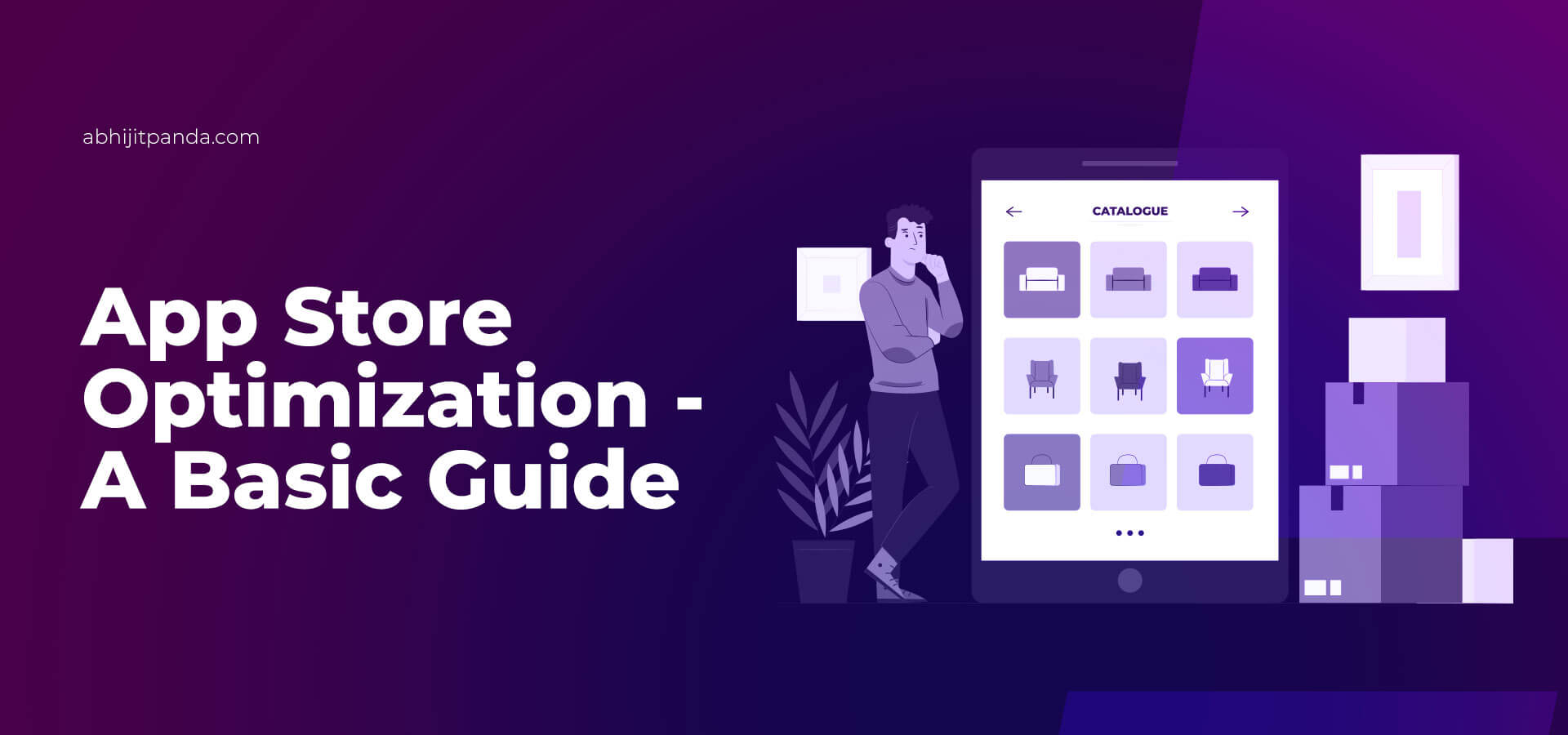 App Store Optimization – A Basic Guide
App Store Optimization – A Basic Guide
The app developers cannot increase the number of downloads without making their apps rank higher on the search results of the Apple App Store or Google Play Store. App store optimization or app store SEO is the process of improving the visibility and discoverability of an app on the search results displayed by app stores.
According to the latest mobile app download and usage statistics,
“The iOS App Store launched in 2008 with 500 apps. Today, there are over seven million apps available across iOS and Android platforms, extending to every app and game genre and niche.”
Therefore, you cannot increase the number of downloads and generate recurring revenue without complementing the mobile app development strategy with an elaborate app store optimization strategy.
What Do App Stores Consider While Ranking Mobile Apps?
Like search engines, app stores also use a variety of ranking factors while displaying mobile apps on search results. But the app ranking factors vary across Apple App Store and Google Play Store. App Store displays iOS apps and games on search results using key ranking factors like app name, app URL, app subtitle, keywords, in-app purchases, number of downloads, update frequency, and reviews and ratings.
On the other hand, Google Play Store displays Android apps and games on search results using key ranking factors like app title, app description (both long and short), in-app purchases, number of downloads, update frequency, and reviews and ratings. You must understand the key ranking factors used by the targeted app store while implementing app store optimization.
Also, you should remember that the Play Store considers both short descriptions and long descriptions while indexing and ranking an Android app. App Store allows you to include relevant keywords in specific keyword fields while listing the iOS app. Both app stores make changes to the ranking factors regularly. But none of the app stores reveals app ranking factors clearly and regularly. You can make the app store optimization strategy more effective by understanding the latest app store review policy and guidelines.
How to Optimize Your Mobile App for Apple App Store or Google Play Store?
Optimize the App’s Title and Subtitles
Both App Store and Play Store use an app’s title as one of the key app ranking factors. Also, the prospective users decide about collecting additional information about an app based on its title. While implementing app store SEO, you must focus on keeping the app’s title easy to remember and recall. Also, you must add context to the mobile app by adding a subtitle.
While creating the app’s title and subtitles, you must explore ways to include the most relevant keywords naturally and strategically. You can even add credibility to the app by including the brand name in the title. However, you must keep the app’s title short as Play Stores restricts the number of characters to 50 and App Store allows only 30 characters for the title.
Optimize the App’s Description
Unlike App Store, Play Store uses the app’s long and short descriptions as a key ranking factor. But you can easily optimize both Android and iOS apps by writing compelling and engaging descriptions. Both app stores allow you to write the app’s description in 400 characters. Hence, you need to prioritize the information required to describe the app effectively.
While writing the app’s description, you must focus on answering the questions asked by users before downloading an app. The description must clearly highlight the key features and important aspects of the app. Also, you must clearly mention why a user should download the mobile app. Also, you must not forget to include the relevant keywords in the description strategically and naturally.
Choose and Include the Right Keywords
Like search engine optimization (SEO), app store optimization also requires you to perform elaborate keyword research. You can identify and shortlist the relevant keywords from the mobile app using a slew of keyword research tools. The tools make it easier for you to understand the keywords or keyphrases used by searchers to find similar mobile apps.
Also, you can identify the relevant keywords by assessing the title and descriptions of the mobile apps launched by your competitors. After identifying relevant keywords, you must focus on including them strategically. You must include the main keyword in the app’s title and description strategically.
Showcase the App Visually
In addition to optimizing the app’s title and descriptions, you must focus on showcasing the app visually. Both App Store and Play Store allow you to showcase the app visually using screenshots and videos. App Store allows you to include up to 10 screenshots, while the Play Store allows you to include up to 8 screenshots.
Also, the App Store, unlike the Play Store, displays screenshots on search results. You can highlight important aspects of the mobile app visually by including the maximum number of screenshots. In addition to showcasing key features of the app, the screenshots will help you to achieve higher click-through rates.
However, many users these days prefer gathering information about the app by watching videos. The videos can highlight the important aspects of your mobile app more effectively than static screenshots. Hence, your app store SEO strategy must focus on beating the competition using short but compelling videos.
Encourage Users to Rate and Review the App
Both the App Store and Play Store use reviews and ratings as key ranking metrics. They assess the quality and popularity of a mobile app based on the reviews and ratings posted by existing users. Hence, the apps will have higher ratings appear higher on the app store search results. Your app store optimization strategy must focus on encouraging users to post reviews and rate the app.
You can request and persuade users to review and rate the app by sending emails and using social media. Also, the app must request the uses to leave a review internally when the user experiences something positive by reaching the next level or completing a transaction. At the same time, you can use gamification techniques to make users earn rewards by posting reviews and ratings.
Focus on Increasing Downloads
Both App Store and Play Store use the number of downloads as a key ranking factor while displaying apps on the search results. You can easily boost the mobile app’s visibility and discoverability on app store search results by persuading users to download your app. Hence, your app store optimization strategy must focus on increasing the app install rate consistently.
You cannot achieve a higher app install rate by implementing a slew of techniques – social media promotion, email marketing, content marketing, and app directory site listing. Also, you can make increase downloads by allowing users to download the paid app for free for a short duration. However, your strategy must focus on understanding and meeting the expectation of users.
Review and Finetune the ASO Strategy
The app stores include new ranking factors to deliver more relevant search results to users. Also, the app store trends change from time to time. You cannot increase downloads consistently without adopting the emerging trends in app store SEO early. You must keep the app store SEO strategy flexible enough to adopt emerging trends proactively.
At the same time, it is also important to assess the performance of the ASO strategy from time to time using the right parameters. You can easily make the ASO strategy more effective by implementing simple changes like refreshing the keywords, changing screenshots, and rewriting the app’s title, subtitles, and descriptions. Also, you must update the app regularly by adding new features and improving the user experience.
Both Apple and Google change their app store guidelines regularly. Also, they use new ranking factors while ranking mobile apps on their search results. That is why; you must focus on making app store optimization or app store SEO an ongoing process. Also, you have to review and finetune the app store SEO strategy regularly to boost your app’s discoverability, increase the number of downloads, and leverage app monetization options. You also need to keep an eye on the recent SEO trends which will also impact the ASO trends.









Leave a Reply